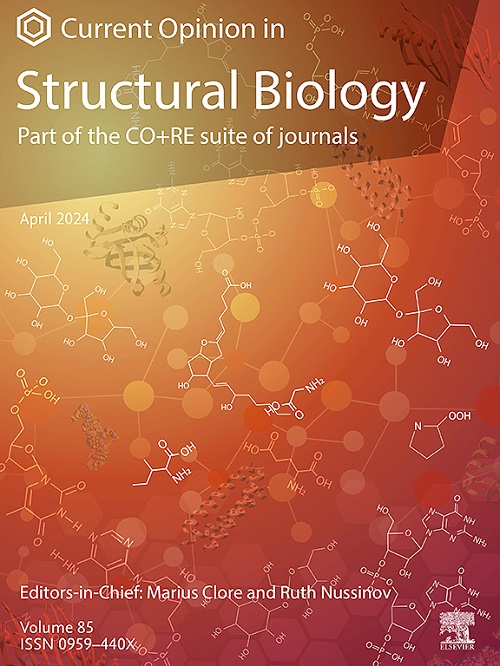Probing protein–DNA interactions and compaction in nanochannels
IF 6.1
2区 生物学
Q1 BIOCHEMISTRY & MOLECULAR BIOLOGY
引用次数: 0
Abstract
DNA confined to nanofluidic channels with a cross-section from tens to hundreds of nm wide and hundreds of microns long stretches in an equilibrium process free of flow or end tethering. Because DNA is free to move along the channel axis, its extension is exquisitely sensitive to DNA–DNA interactions and the DNA persistence length, as well as the contour length. We discuss how this sensitivity has been used to probe DNA-protein interactions at physiological concentrations of both DNA and proteins.
探测纳米通道中蛋白质与 DNA 的相互作用和压实。
DNA 被限制在横截面宽几十到几百纳米、长几百微米的纳米流体通道中,在没有流动或末端系链的平衡过程中延伸。由于 DNA 可以沿通道轴线自由移动,因此其延伸对 DNA-DNA 相互作用、DNA 持续长度以及轮廓长度极为敏感。我们将讨论如何利用这种敏感性来探测 DNA 和蛋白质在生理浓度下的相互作用。
本文章由计算机程序翻译,如有差异,请以英文原文为准。
求助全文
约1分钟内获得全文
求助全文
来源期刊

Current opinion in structural biology
生物-生化与分子生物学
CiteScore
12.20
自引率
2.90%
发文量
179
审稿时长
6-12 weeks
期刊介绍:
Current Opinion in Structural Biology (COSB) aims to stimulate scientifically grounded, interdisciplinary, multi-scale debate and exchange of ideas. It contains polished, concise and timely reviews and opinions, with particular emphasis on those articles published in the past two years. In addition to describing recent trends, the authors are encouraged to give their subjective opinion of the topics discussed.
In COSB, we help the reader by providing in a systematic manner:
1. The views of experts on current advances in their field in a clear and readable form.
2. Evaluations of the most interesting papers, annotated by experts, from the great wealth of original publications.
[...]
The subject of Structural Biology is divided into twelve themed sections, each of which is reviewed once a year. Each issue contains two sections, and the amount of space devoted to each section is related to its importance.
-Folding and Binding-
Nucleic acids and their protein complexes-
Macromolecular Machines-
Theory and Simulation-
Sequences and Topology-
New constructs and expression of proteins-
Membranes-
Engineering and Design-
Carbohydrate-protein interactions and glycosylation-
Biophysical and molecular biological methods-
Multi-protein assemblies in signalling-
Catalysis and Regulation
 求助内容:
求助内容: 应助结果提醒方式:
应助结果提醒方式:


